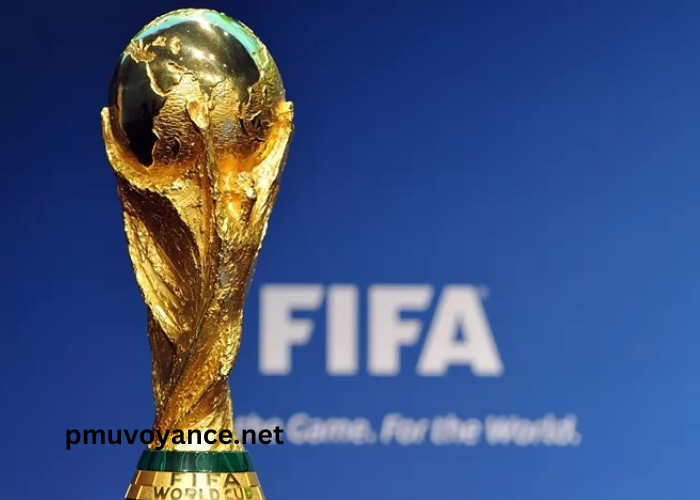The Coupe Du Monde, known as the FIFA World Cup, stands as the most prestigious football tournament on the planet. Every four years, the world unites to witness this grand spectacle, where nations compete not just for glory, but for the honor of being crowned the best in the world. This tournament is not merely a football event; it is a global phenomenon that transcends borders, cultures, and languages, bringing together billions of fans in a shared celebration of the beautiful game.
The Origins and Evolution of Coupe Du Monde
The FIFA World Cup’s roots trace back to the early 20th century, with the inaugural tournament held in Uruguay in 1930. It was the brainchild of Jules Rimet, a visionary who saw the potential for a global football competition. The tournament featured 13 teams, with Uruguay emerging as the first-ever champions.
Over the decades, the Coupe Du Monde has evolved significantly. From its humble beginnings, it has grown into a 32-team tournament, showcasing the best talent from every corner of the globe. The expansion has not only increased the competition but also the global reach and influence of the event. Each edition of the World Cup has brought new innovations, from the introduction of group stages to the use of technology like VAR (Video Assistant Referee), reflecting the dynamic nature of the sport.
The Magic of the Group Stages
The Coupe Du Monde’s group stages are a critical part of the tournament, where teams are divided into groups and compete to advance to the knockout rounds. These stages are often filled with surprises, as underdog teams challenge established football powerhouses. The unpredictability of the group stages is what makes the World Cup so thrilling. Fans from around the world gather to watch their teams compete, hoping to see them progress to the next round.
The group stages also provide a platform for emerging talents to showcase their skills on a global stage. Many football legends, such as Pelé, Maradona, and Ronaldo, made their mark during the World Cup, and it is during these early rounds that future stars often emerge.
The Drama of the Knockout Rounds
The knockout rounds of the Coupe Du Monde are where the intensity reaches its peak. Teams must win to advance, and the pressure is immense. These matches are often decided by moments of brilliance, with players delivering unforgettable performances that are etched into football history.
The knockout rounds have produced some of the most iconic moments in sports. From last-minute goals to penalty shootouts, the drama of these matches captivates the world. It is in these high-stakes encounters that heroes are born, and legends are made.
The Final: A Battle for Immortality
The World Cup final is the culmination of years of preparation, dedication, and hard work. It is the ultimate stage where the two best teams in the world face off for the title of world champions. The atmosphere in the stadium is electric, with fans from all over the world cheering for their teams.
The final is more than just a match; it is a cultural event that brings together people from different backgrounds and nations. The significance of the final transcends the sport itself, as it represents the unity and passion that football can inspire. Winning the Coupe Du Monde is the pinnacle of achievement in football, and the final is where history is made.
The Impact of Coupe Du Monde on Global Culture
The Coupe Du Monde’s influence extends far beyond the football field. It has a profound impact on global culture, bringing together people from different backgrounds and fostering a sense of unity. The World Cup is a celebration of diversity, with fans from all over the world coming together to support their teams and celebrate the sport they love.
The tournament also plays a significant role in promoting football as a global sport. It inspires millions of young players to take up the game, dreaming of one day representing their country on the world stage. The World Cup’s reach is unparalleled, with billions of people tuning in to watch the matches, making it one of the most-watched events in the world.
The Role of Host Nations
Hosting the Coupe Du Monde is a prestigious honor that comes with significant responsibilities. The host nation is tasked with providing the infrastructure and facilities necessary to accommodate the teams and fans. This includes building or renovating stadiums, improving transportation networks, and ensuring the safety and security of everyone involved.
The impact of hosting the World Cup extends beyond the tournament itself. It provides an opportunity for the host nation to showcase its culture, heritage, and hospitality to the world. The influx of tourists and media coverage can boost the local economy and create lasting legacies, such as improved infrastructure and increased global visibility.
However, hosting the World Cup also comes with challenges. The financial and logistical demands can be substantial, and there is often debate about the long-term benefits versus the costs. Despite these challenges, the opportunity to host the Coupe Du Monde remains highly coveted, with countries around the world vying for the chance to be the center of the footballing universe.
Memorable World Cup Moments
Throughout its history, the Coupe Du Monde has produced countless memorable moments that have left a lasting impact on the sport. These moments are celebrated by fans and are often replayed in highlight reels for years to come.
One of the most iconic moments in World Cup history is Diego Maradona’s “Hand of God” goal in the 1986 tournament. This controversial goal, along with his stunning solo effort known as the “Goal of the Century,” solidified Maradona’s place as one of the greatest players of all time.
Another unforgettable moment is Zinedine Zidane’s headbutt in the 2006 final. This incident, which led to his red card, was a shocking and dramatic end to Zidane’s illustrious career. The match ended with Italy winning the World Cup after a tense penalty shootout.
The 2010 World Cup in South Africa also holds a special place in history. It was the first time the tournament was held on the African continent, and it brought the world together in celebration of football and African culture. The vuvuzelas, a type of horn popular in South Africa, became a symbol of the tournament, adding to the unique atmosphere of the event.
The Role of Technology in Modern World Cups
As the Coupe Du Monde has evolved, so too has the role of technology in the tournament. Modern World Cups now incorporate advanced technologies to enhance the experience for players, officials, and fans alike.
One of the most significant technological advancements is the introduction of the Video Assistant Referee (VAR) system. VAR allows referees to review controversial decisions using video footage, helping to ensure the accuracy of key decisions during matches. While VAR has been met with mixed reactions from fans and players, it has undeniably had a significant impact on the game, reducing errors and controversies.
Goal-line technology is another important innovation. This technology uses sensors and cameras to determine whether the ball has crossed the goal line, providing a definitive answer in situations where it may be unclear. This has helped to prevent disputes and ensure that the correct decisions are made.
In addition to these on-field technologies, the broadcasting of the Coupe Du Monde has also seen significant advancements. High-definition cameras, 360-degree replays, and virtual reality experiences have transformed how fans watch the tournament, making it more immersive and accessible than ever before.
The Future of the Coupe Du Monde
Looking ahead, the future of the Coupe Du Monde promises to be exciting and dynamic. The tournament is set to expand to 48 teams starting in 2026, a move that will bring more nations into the fold and increase the diversity of the competition. This expansion reflects the growing global popularity of football and the desire to include more teams and fans in the World Cup experience.
The 2026 World Cup will also be the first to be hosted by three countries: the United States, Canada, and Mexico. This unique collaboration will showcase the diverse cultures of North America and provide a new model for future tournaments.
Environmental sustainability will also be a key focus for future World Cups. As concerns about climate change and environmental impact grow, FIFA is committed to making the tournament more sustainable. This includes reducing carbon emissions, promoting renewable energy, and minimizing waste. The goal is to ensure that the World Cup leaves a positive legacy for the environment and the communities involved.
The continued integration of technology will also shape the future of the Coupe Du Monde. Innovations in sports science, data analysis, and fan engagement will enhance the tournament experience, making it more interactive and personalized for fans around the world.
Conclusion: The Everlasting Legacy of Coupe Du Monde
The Coupe Du Monde is more than just a football tournament; it is a global celebration of sport, culture, and unity. From its humble beginnings to its current status as the pinnacle of international football, the World Cup has captured the hearts and imaginations of billions of people around the world.
As the tournament continues to evolve, it remains a symbol of hope, passion, and excellence. The Coupe Du Monde unites nations, inspires future generations, and creates moments that are etched into the fabric of football history. With each edition, the World Cup leaves an indelible mark on the world, reminding us of the power of sport to bring people together and create unforgettable memories.



